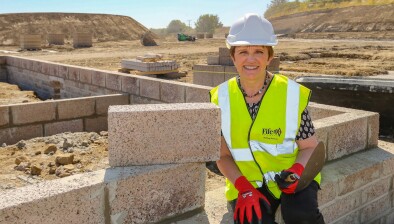Scottish Government rejects appeal for new Kingseat homes
A Scottish Government reporter has rejected an appeal for 80 homes to be built on farmland located east of Kingseat.

The reporter confirmed that she did not consider the proposals to develop seven hectares either side of Cuddyhouse Road would be the “right development in the right place”.
In September 2020, Gladman Developments Limited lodged the appeal over Fife Council’s refusal of the plans.
The developer initially sought permission to build the £9.8 million development located to the North and South of Cuddyhouse Road.
The proposal comprised of homes of mixed type and tenure with the inclusion of 30 affordable homes. Plans for new paths and cycle routes were also proposed within the plans.
Fife Council rejected the application in June 2020 after the central and west planning committee ruled that the development was not needed as a five-year forecast said “there will be a surplus” of homes in the area.
The local authority added that residents would be faced with “unacceptable levels” of noise and the development would have an adverse effect on the “visual and landscape character” of Kingseat.
The development would have extended the boundary of Kingseat east towards Cowdenbeath, one of the concerns raised in the 44 objections by members of the public, The Central Fife Times reports.
However, Gladman Developments Limited submitted an appeal to the Scottish Government as they said the council’s decision to refuse was “not justified” and the development would provide “much-needed housing” for Kingseat.
Reporter Lorna McCallum said the proposed development was on a greenfield site at the edge of a village that is within the countryside and “completely lacking” in local services and facilities. She said: “The settlement is detached from the nearest urban areas with no shops, schools or train stations within reasonable walking distance.
“The walking routes are such that they are not likely to encourage use by residents of the proposed development to the nearest urban area where services and facilities are located and only one of the bus services from the village runs on a frequent basis.
“I have concluded that the development is not sustainably located and that it would undoubtedly increase reliance on private cars.”
She added: “There is no doubt that this site could make a valuable contribution to the significant shortfall in the housing land supply. However, I find that there is also no doubt that the development would not be sustainably located. I find that the lack of sustainability tilts the balance heavily against the proposal.”
Ms McCallum added that the plans would also have “adverse effects” on the landscape character – particularly in relation to the setting of the village and the Hill of Beath – which added further weight to the negative attributes.
She concluded: “In applying the overall balance, even in applying a steep angle of tilt in line with the appellant’s assessment of the housing land supply position, I conclude that, due principally to the heavily negative sustainability implications of the proposal, the adverse effects significantly and demonstrably outweigh the benefits.
“It is my conclusion that the proposal does not constitute sustainable development and I do not consider that it would be the right development in the right place.”













